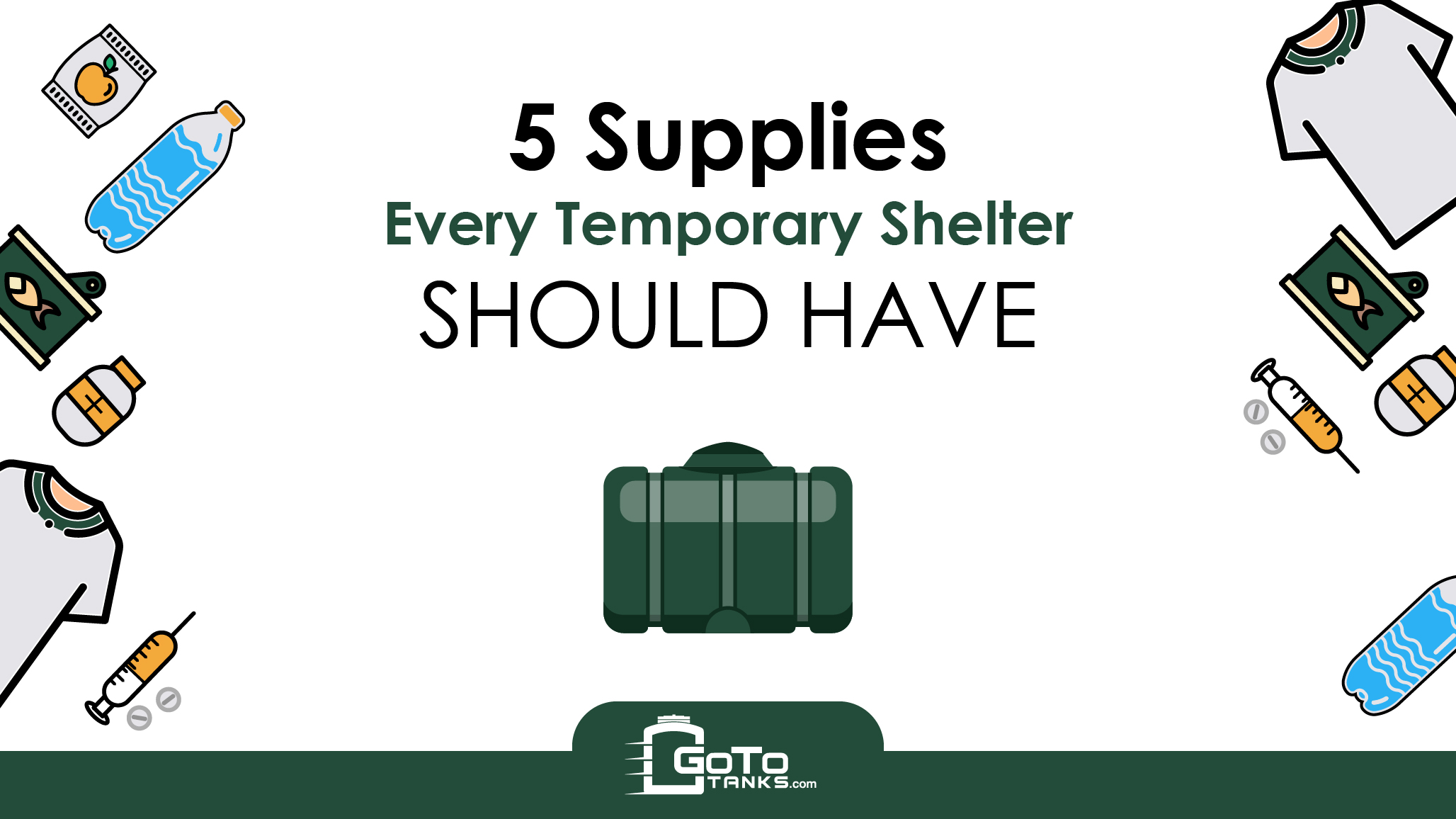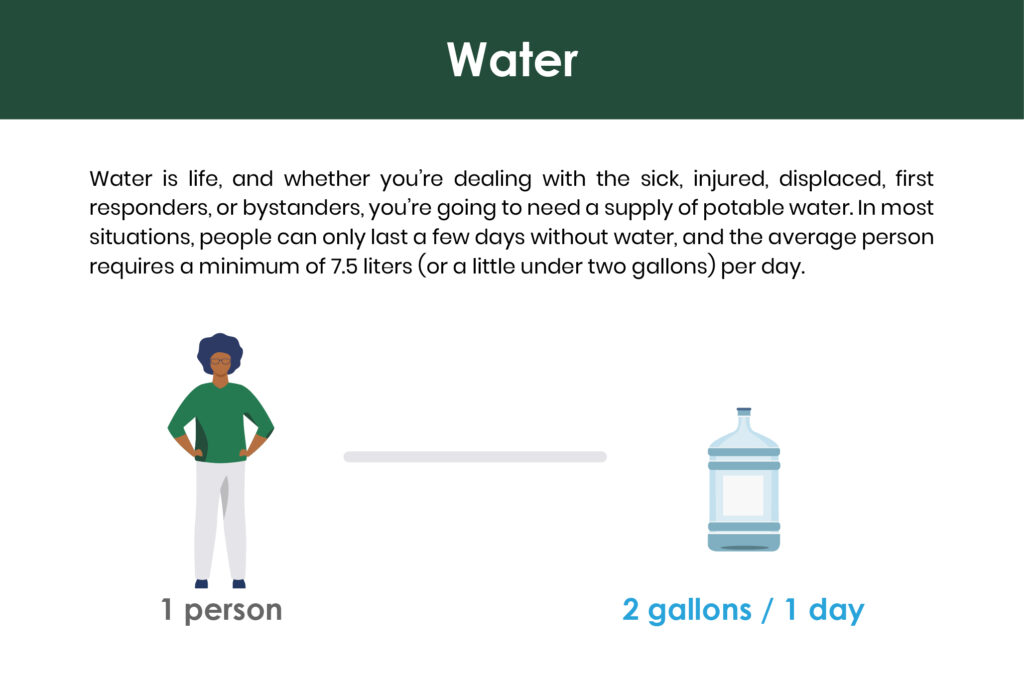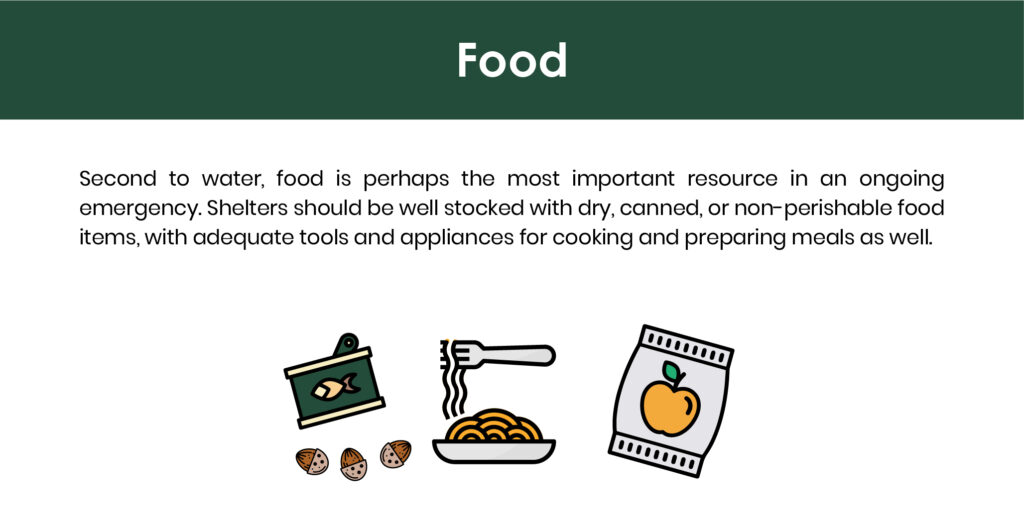
While disasters often hit without warning, many can be anticipated. The Atlantic hurricane season, for example, runs from June 1st to November 30th. Tornadoes are at their fiercest between March and June. Floods most often occur in spring. And even the novel coronavirus may prove to have some level of seasonality.
In many disasters, officials look to create emergency shelters to temporarily house people who have been injured, sickened, or displaced. These temporary shelters may be converted from existing structures, like schools and gymnasiums, or built on the fly from tents and modular building materials.
In almost any scenario, there are a few supplies that will prove indispensable: food, water, medical equipment, sanitation, and bedding, to name a few. Other resources, such as internet access, may also be valuable, but in an ideal situation an emergency shelter will be self-sufficient—capable of caring for and housing individuals and families without need for external direction.

Water is life, and whether you’re dealing with the sick, injured, displaced, first responders, or bystanders, you’re going to need a supply of potable water. In most situations, people can only last a few days without water, and the average person requires a minimum of 7.5 liters (or a little under two gallons) per day. Families, individuals, and emergency personnel need to be prepared with an on-site water storage system that can handle that level of demand.
Whatever the source of water, officials should take care to protect and secure it. Filtration and treatment may be necessary in some circumstances, especially if the water is coming from the local environment. Every effort should be made to disinfect, filter, and boil water sources to protect from contamination. Fortunately, filtrations systems can be made with natural materials by layering sand, stone, and charcoal in a plastic tank or vessel. The World Health Organization also recommends disposing of wastewater in latrines or areas that are fully separated from nearby food, water, and sanitation sources.

Second to water, food is perhaps the most important resource in an ongoing emergency. Shelters should be well stocked with dry, canned, or non-perishable food items, with adequate tools and appliances for cooking and preparing meals as well. Depending on the amount of people using the shelter, some sort of delegation of responsibilities may be required for food prep staff. These individuals may also be responsible for locating, supplying, and storing food stocks. Overflow supplies should be stored in locked or secure areas, accessible only to staff and first responders. If a shelter is fortunate enough to have refrigeration, perishable items may be stored as well.
Shelving may be required to store food supplies. Plastic tanks can once again be used for a variety of food storage needs. Common ingredients like sugar, flour, cooking oil, and rice can all be stored in food-grade plastic tanks, providing a plentiful supply of critical ingredients to food prep staff.

Supply storage may be as important as the supplies themselves. Insecure, immovable, or inadequately sized tanks and containers can create serious headaches for families and emergency responders, if not outright shortages. When preparing for an emergency—be it a temporary or personal shelter—it’s important to think about the layout of your supplies and how they will be best accessed. That includes keeping them secure and invulnerable to disruptions. Plastic tanks provide plenty of security, resilience, and portability for storing food, water, fuel, and other vital resources.
They come in a variety of shapes, sizes, and forms to meet pretty much any need imaginable. Made from food-grade plastic, tanks can be shaped to match any storage or transport requirements. Some can be fitted to sit in the back of a pickup truck, while others are made from lightweight, collapsible bags that can sit in crawlspaces or overhead racks. By far the most popular form is a simple vertical tank. Vertical tanks can be buried underground or transported in trucks, with spigots and lids for easy access.
Every emergency shelter should have an adequate supply of first aid, medication, and sanitation equipment. The exact type of medicine required for general use depends on the situation, but there are some basic supplies that will always find be handy. Multi-purpose soap, toilet paper, and toothbrushes alone can go a long way. First aid kits should provide a basic supply of gloves, bandages, disinfectants, and non-prescription drugs like ibuprofen, aspirin, and acetaminophen for pain or fever. These supplies are compact and transportable and will be of use in any situation involving sick or injured people.
It’s also good advice is to have three to five days worth of necessary medications available for an emergency situation. Acquiring prescription medicine can be a challenge in any disaster, so patients should have a reserve supply on hand. They should also take note of expiration dates, not merely on prescription medication but over-the-counter drugs as well.
Once again, you’ll need to think about how to store all this equipment. Basic shelving may do the trick, but more likely you’ll want to secure the equipment, keeping drugs and other supplies out of the hands of children or people who are not qualified to administer them.
Basic comfort goes a long way in keeping people calm during an emergency. Cots, blankets, and jackets can provide material relief from the elements and give individuals a sense of security. This may require advanced planning, as the need for beds may increase dramatically with the severity of the emergency.
In some natural emergencies, clothing gets wet and needs to be replaced. Shelters should provide plenty of clothes and shoes for people who have been exposed to wet and cold climates. This will also improve sanitary conditions and limit the strain on emergency responders.
As always, you will need to think about how to store supplies of clothing, blankets, footwear, and beds, as well as how to keep those supplies secure.
Whether you need a short- or long-term supply of water, food, medicine, or other supplies, Go To Tanks has you covered. We offer a variety of emergency water storage solutions, including plastic tanks, bags, utility tanks, and more. Our tanks are made from food-grade plastic, come in a variety of colors, and meet a complete range of size specifications. They can be used to store chemicals, wastewater, and harvested rain, as well as food, fuel, oil, and even many chemicals.
Call 1-877-468-2657 and we’ll help you find the tank that matches your needs.